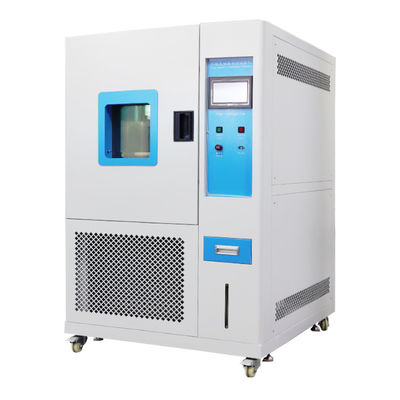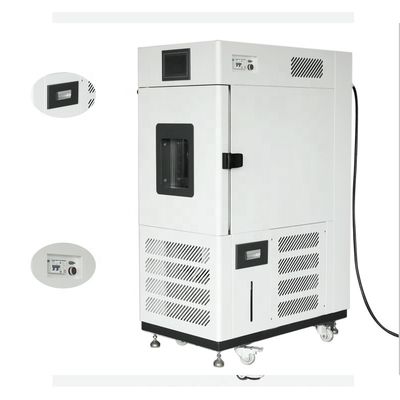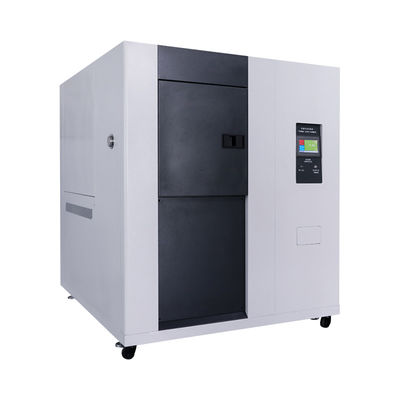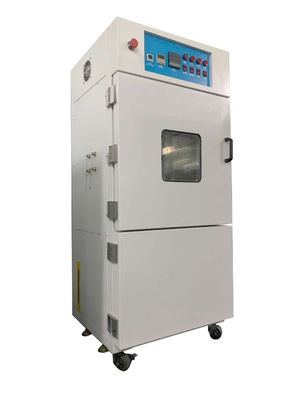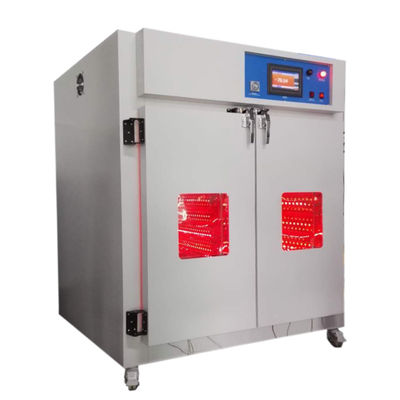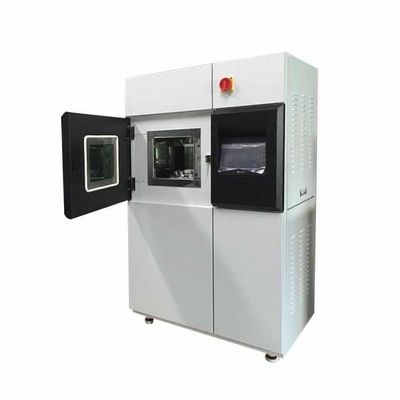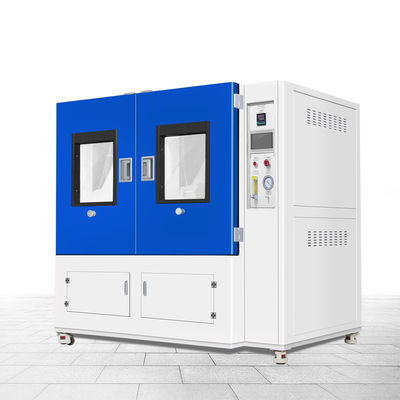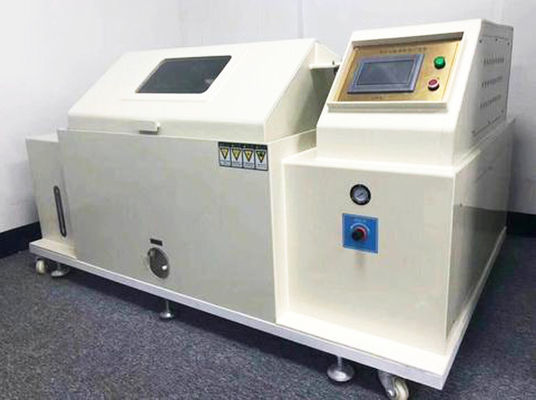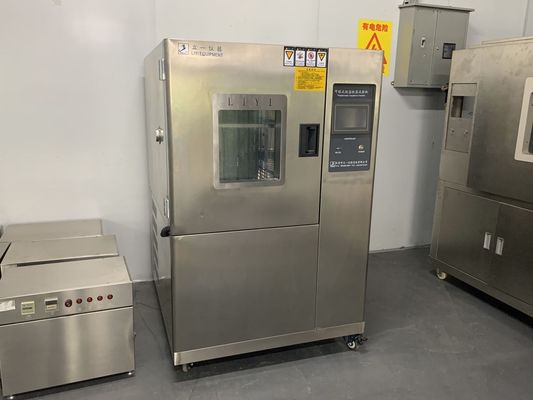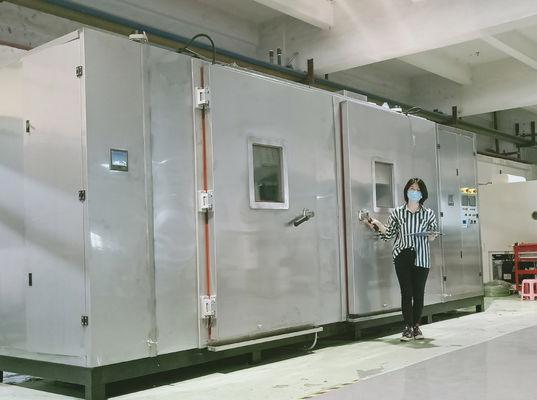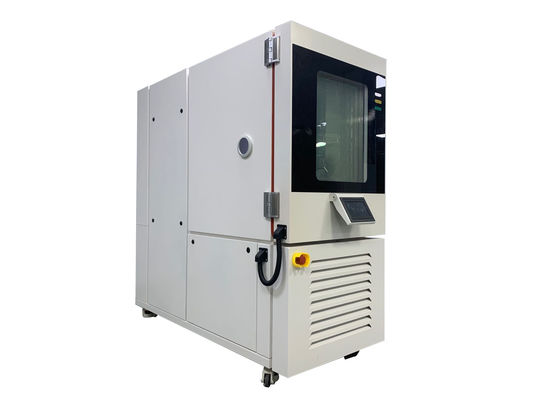The rapid temperature change test is suitable for the safety performance test of electronic components, providing reliability test, product screening test, etc. At the same time, through this test, the reliability of the product can be improved and the quality of the product can be controlled. Rapid temperature change test is a necessary test and assessment in aviation, automobile, home appliances, scientific research and other fields, and to determine the adaptability of parameters and performance of electrical, electronic, automotive electrical, materials and other products after high and low temperature tests are subjected to temperature environmental impact changes. , suitable for schools, factories, military, research, and other units.
Rapid temperature change test The temperature change test is to set a certain temperature change rate to perform the transition between high temperature and low temperature.
There are two types of practical applications:
1. The slow temperature change test, the temperature change rate is less than 3°C/min (generally, the parameter is often selected as 1°C/min for each standard), and it is also the temperature change, temperature cycle, and temperature alternating test in general applications (this Three categories are one test);
2. Rapid temperature change test, the temperature change rate is ≥3℃/min, which is also the rapid temperature change test in general applications. The faster the temperature change rate, the more severe the assessment is
Features of Rapid Temperature Change Test:
The product works in the test and the temperature changes at a certain rate. The temperature change rate is generally 3°C/min, 4°C/min, 5°C/min, 7°C/min, 10°C/min, 15°C/min, 20°C/min, 25°C/min.
Rapid temperature change testing is suitable for components, equipment or other products. Simulates changes in temperature with live work for products, such as rapidly changing ambient temperature while a system/component is operating. If the system/component is at a heat soak temperature (eg engine mounted system/component), additional brief temperature spikes during the high temperature phase are required to ensure the basic function of the product during this period. In order to avoid the effect of electrothermal diffusion in the system/component and inhibiting the system/component from reaching a low temperature, the product is turned off during the cooling stage.
The failure mode is electrical failure caused by temperature changes. Temperature cycling effects: loss of lubricant deterioration and loss of lubrication, solder joint cracking, PCB delamination, structural loss of mechanical strength and plastic deformation, glass and optical products cracking, solder joint cracking, parts Degradation of properties, fracture, loose moving parts, shrinkage and expansion of materials, failure of air tightness and insulation protection.
The rapid temperature change test chamber is suitable for aerospace products, information electronic instruments, materials, electrical, electronic products, and various electronic components to test their performance indicators in the environment of rapid changes in high temperature and low temperature.
Structure of Rapid Temperature Change Test Chamber
1. The whole box adopts the overall structure. Box structure
2. The inside of the box is made of 1.0mm imported SUS304B stainless steel plate, the outside is made of 1.0mm cold-rolled steel plate, and the thermal insulation material is ultra-fine glass thermal insulation cotton.
3. The door is sealed with double-layer silicone rubber sealing material.
4. The observation window is a multi-layer conductive film tempered insulating glass with a size of 350×500mm. In order to prevent the glass from frosting at low temperature, a built-in special safety voltage heating wire surrounds the heating belt with a power supply voltage of 36V, and is equipped with a lighting lamp for Observation provides illumination.
5. There is a φ50mm test hole with a plug on the side of the box. The plug material is low-foaming silicone rubber, which can withstand high and low temperature and has both thermal insulation performance.
6. An air conditioning cabinet is installed on the back side of the box studio, and humidifiers, evaporators, electric heaters, fans, fan volutes and other equipment are installed in between.
7. The temperature sensor is placed in the air outlet.
8. The air supply method in the test box is the upper air supply and lower return air cooling system
Rapid temperature change test chamber refrigeration system and compressor: In order to ensure the cooling rate and minimum temperature requirements of the test chamber, this test chamber adopts a binary cascade air-cooled refrigeration system composed of a Taikang hermetic compressor. The cascade refrigeration system includes a high temperature refrigeration cycle and a low temperature refrigeration cycle. The connecting container is an evaporative condenser. The evaporative condenser is also used for energy transfer. the goal of. The design of the refrigeration system uses energy regulation technology. An effective treatment method can not only ensure the normal operation of the refrigeration unit, but also effectively adjust the energy consumption and refrigeration capacity of the refrigeration system, so as to reduce the operating cost of the refrigeration system. And the failure rate drops to a more economical state.
Refrigerant: R404 (high temperature cycle), R23 (low temperature cycle)
How refrigeration works
The high and low refrigeration cycle of the rapid temperature change test chamber adopts the reverse karyo cycle, which consists of two isothermal processes and two adiabatic processes. The process is as follows: the refrigerant is compressed adiabatically by the compressor to a higher pressure, which consumes work to increase the exhaust temperature, and then the refrigerant exchanges heat with the surrounding medium isothermally through the condenser, and transfers heat to the surrounding medium. After the refrigerant expands adiabatically through the valve to do work, the temperature of the refrigerant decreases. Finally, the refrigerant absorbs heat from the higher temperature object isothermally through the evaporator, so that the temperature of the cooled object decreases. This cycle is repeated to achieve the purpose of cooling.


 Your message must be between 20-3,000 characters!
Your message must be between 20-3,000 characters! Please check your E-mail!
Please check your E-mail!  Your message must be between 20-3,000 characters!
Your message must be between 20-3,000 characters! Please check your E-mail!
Please check your E-mail! 
